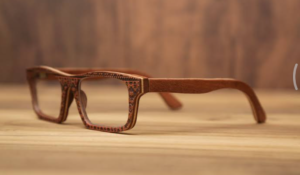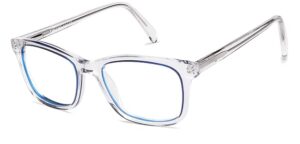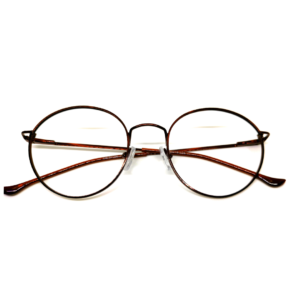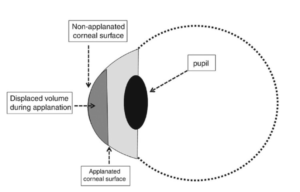The frame of glasses typically consists of two main parts: the front frame, which holds the lenses, and the temples (or arms), which extend back over the ears to keep the glasses in place. These components are often made of materials such as plastic, metal, or a combination of both, and they come in various designs to suit different tastes and functional needs. Frames also play a significant role in determining the overall look and functionality of the glasses.
There are several types of frame materials commonly used in eyeglasses, including:
1. Metal Frame
2. Plastic Frame
3. Combination ( both metal & plastic)
4. Wood
5. Ceramic Frame



*There are several types of metal frame materials commonly used for eyeglasses:*
*Stainless Steel:* Lightweight, durable, and corrosion-resistant.
*Titanium:* Extremely lightweight, strong, and hypoallergenic.
*Monel:* A nickel-copper alloy that is durable and corrosion-resistant.
*Aluminum:* Lightweight and corrosion-resistant, often used in sports or active eyewear.
*Flexon (Memory Metal):* A titanium-based alloy that is highly flexible and returns to its original shape after bending.
*Beryllium:* Lightweight and strong, with hypoallergenic properties.
*Beta-Titanium:* A blend of titanium and other metals, offering flexibility and strength.
Each material has its own unique properties, so the choice depends on factors such as comfort, durability, and style preferences.
*There are several types of plastic frame materials used for eyeglasses, including:*
*Acetate:* This is a lightweight and durable material that can be easily molded into various shapes and colors, making it popular for fashion frames.
*Cellulose acetate propionate (CAP):* Similar to acetate but with added flexibility and durability, often used in sports eyewear.
*Nylon:* Also known as polyamide, nylon frames are lightweight, flexible, and resistant to stress and impact. They are often used in sports and active eyewear.
*Polycarbonate:* Known for its high impact resistance, polycarbonate frames are lightweight and commonly used in safety glasses and sports eyewear.
*Polyurethane:* This material offers flexibility and durability, making it suitable for active lifestyles and children’s eyewear.
*TR-90:* A thermoplastic material known for its flexibility, durability, and lightweight properties. TR-90 frames are often used in sports and performance eyewear.
Each type of plastic frame material has its own set of advantages and may be chosen based on factors such as comfort, durability, style, and intended use.
*There are several types of materials used for combination frame eyeglasses, which typically feature a mix of metal and plastic components. Some common combinations include:*
*Metal frames with acetate (plastic) temples:* These frames often have metal fronts for durability and acetate temples for added style and comfort.
*Titanium frames with acetate accents:* Titanium is lightweight and durable, and when combined with acetate accents, it creates a stylish and modern look.
*Stainless steel frames with plastic bridges:* Stainless steel is known for its strength and corrosion resistance, and when paired with a plastic bridge, it can provide a comfortable fit and unique design.
*Aluminum frames with rubberized temples:* Aluminum frames are lightweight and often feature rubberized temples for added grip and comfort.
*Titanium frames with wood or carbon fiber inserts:* Titanium frames can be combined with wood or carbon fiber inserts for a distinctive and sophisticated look.
These combinations offer a range of styles, durability, and comfort options for eyeglass wearers.
*There are several types of wood commonly used for eyeglass frames:*
*Bamboo:* Known for its lightweight and eco-friendly properties.
*Walnut:* Offers a rich, dark finish and is highly durable.
*Maple:* Provides a lighter color option with a smooth texture.
*Ebony:* Known for its deep, dark color and luxurious appearance.
*Zebrawood:* Features a distinctive striped pattern, adding uniqueness to the frames.
*Cherry:* Offers a warm, reddish tone and a smooth finish.
Each type of wood has its own characteristics in terms of appearance, weight, durability, and sustainability, allowing for a variety of options to suit different preferences and needs.
*There are several types of ceramic frame materials used in eyeglasses, including:*
*Zirconia Ceramic:* Known for its strength and durability, zirconia ceramic frames are lightweight and hypoallergenic.
*Alumina Ceramic:* Also called aluminum oxide ceramic, alumina ceramic frames offer excellent resistance to scratching and corrosion.
*Titanium Ceramic:* These frames combine the lightweight properties of titanium with the aesthetic appeal of ceramic, offering both strength and style.
*Ceramic Composites:* Some frames are made from ceramic composites, which may include a blend of ceramic materials with other substances for added flexibility or design options.
Each type of ceramic frame material has its own unique characteristics and benefits, so it’s important to consider your preferences and lifestyle when choosing the right one for your eyeglasses.
In conclusion, the choice of frame material for eyeglasses depends on various factors such as comfort, style preferences, durability, and specific needs like allergies or lifestyle activities. Plastic/acetate frames offer versatility and come in various colors and styles, while metal frames, including stainless steel, titanium, and aluminum, provide strength and hypoallergenic properties. Memory metal like Flexon offers exceptional durability and flexibility, while TR-90 frames are lightweight and suitable for active lifestyles. Wood frames are unique and environmentally friendly, while carbon fiber frames offer strength and a high-end aesthetic. Ultimately, selecting the right frame material involves balancing these factors to find the perfect combination of style and functionality for each individual.








